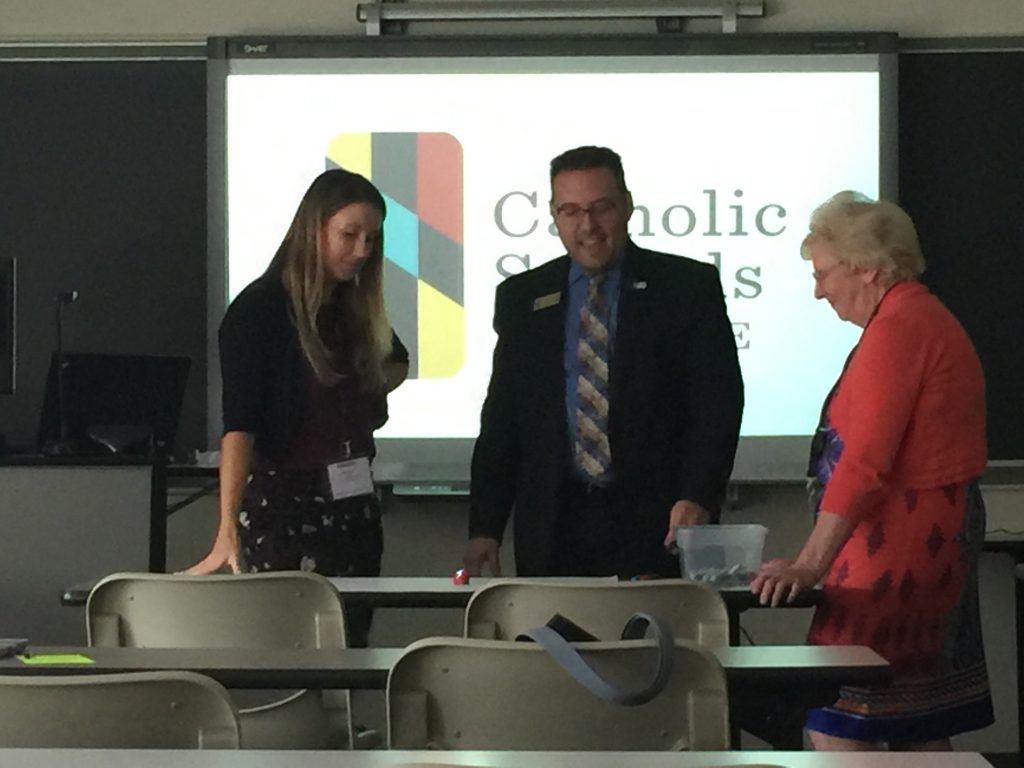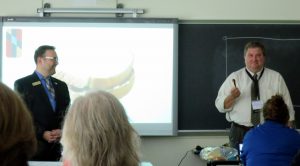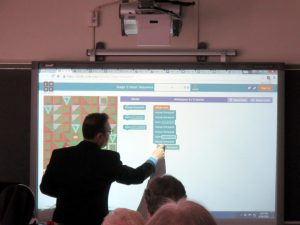This post was contributed by Nancy Caramanico, Instructional Technology Specialist.

One STREAM session, the Magic of Coding, treated attendees to demonstrations, coding ideas and even magic! Joseph Oleszczuk, Technology Coordinator for the Archdiocese of Baltimore, shared his five-years of experience coordinating a coding program in grades 1-8 and teaching coding in grades 5-8 at Holy Angels Catholic School in Baltimore, Maryland.
Having worked as a magician in the past, Joe continues to make magic as a teacher and Director of Technology for the Archdiocese of Baltimore. He likened coding to magic by demonstrating that what is seen as ‘magic’ is actually a set of mechanics that are being followed. These mechanical steps are the heart of coding and programming skills. Joe and his co-presenter Chris Cosentino demonstrated various coding activities. These activities showcased a blend of instructional strategies such as peer teaching and collaborative projects. A variety of websites, software programs and manipulatives for teaching and using programming in the classroom were demonstrated during the session.

The logical steps needed for coding were made evident by a hands-on-exercise where attendees were asked to carefully list the steps necessary for making a peanut butter and jelly sandwich. In another example, attendees even learned how to use software to program a drone to fly!
Joe and Chris also demonstrated block coding strategies and tools. Block coding is a very popular method for teaching programming. Whether creating a card video game or making a drone fly, students can interact with the program and create new scenarios through experimentation and design.

Widely acclaimed activities such as Hour of Code were discussed as well. Hour of Code offers a 60 minute coding activity all schools are challenged to do. Along with the initial challenge, visitors to the site can find many additional activities for enhancing programming skills. Additional resources of showcased during this engaging session included software, manipulatives and websites. These resources can be used by schools to teach programing and coding at many grade levels from early grades right through grade 12 and beyond. Though there were many terrific take-aways from this session, it was clear that these innovative skills are a magical means to effective STEAM and powerful learning today.
Coding & Programming Resources:
CodeAcademy – Online Activities
Code.org – Lesson Resources
Khan Academy – Programming videos
Lego Offerings – Lego has multiple offerings. Lego simple machines and Lego Mindstorm can be used by early grades. Vex IQ can be used with upper grades.
Nova Elements – App – Students can build atoms and learn all about the elements
Tickle – App – Learn how to program drones, Arduino, Swift and iPhone games
Google Apps for Education – Students can do coding via websites and apps. Google Apps allows students to unified logins so that they can log in with Google on various sites.